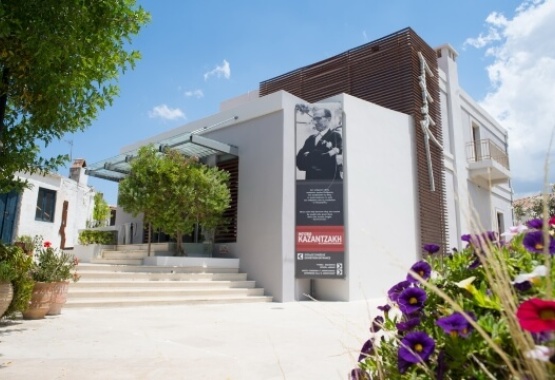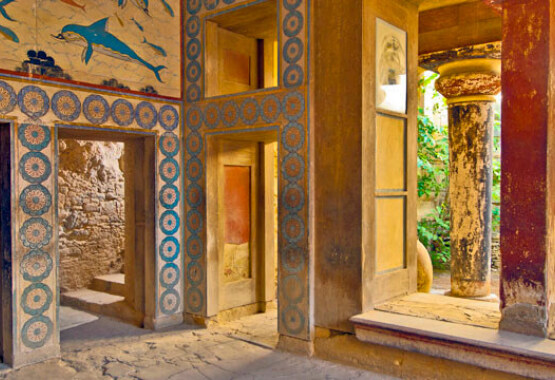Touring the Museum
Let history unfold before your eyes as you walk through the museum halls. The findings from Minoan necropolises include unique works of art as well as items of daily use. Wander through the 27 museum halls and:
- Learn about the evolution of local pottery from the Neolithic plain style (Neolithic period: 7th – 4th millennium BC) to Minoan Period elaborate forms, during the early Bronze Age (3rd millennium BC – the so called Prepalatial Period), and the middle and late Bronze Age (2nd millennium BC - the so called Protopalatial, Neopalatial and Postpalatial periods);
- Admire the impressive Kamares ware; notice the lovely colours and themes, the plant and animal motifs as well as two symbols of the Minoan Times: the sacred double axe and the bull’s head;
- Take some time before the Phaistos Disc, the museum’s most prominent exhibit. It is made of clay, with hieroglyphic carvings and ideograms on it and holds a place among archaeological mysteries since the purpose of its creation is unknown and the meaning of its inscriptions is yet to be deciphered;
- Meet the Minoan famous ‘Snake Goddesses’ figurines, with their impressive upright body posture, holding up snakes on both their hands and wearing the traditional Minoan costume;
- Learn about the Minoans’ everyday life and their favourite sport, bull-leaping, on the wonderful murals on display and the ivory bull-leaper figurine;
- Observe items of daily use found in Minoan necropolises, like Zatrikio, a type of chess played by Minoans, or ivory combs and eyebrow tweezers; modern man is not - after all - so different from the Minoan period man, is he?
- Feast your eyes on the lovely ‘La Parisienne’ fresco (aka Minoan Lady) and the ‘Lily Prince’, two amazing murals displayed on the Museum’s first floor, along with the dolphins mural, and the commanding simplicity of the clay sarcophagi;
- Read the Kourites Hymn at the sanctuary of Zeus Diktaios, which was chanted by young men in the nude while they danced during secret rites. They clashed their copper shields in an attempt to imitate legendary Kourites who guarded the divine infant [Zeus]. They danced noisily while banging their shields in order to cover up the baby’s crying and so protect him from his father Cronus, who was known for eating his children;
- Notice the details on the signet of King Minos ring and a lovely piece of jewellery known as the ‘Bees’, unearthed in the Malia area, which depicts two bees carrying a drop of honey into their honeycomb.
Other collections
The next rooms to be visited on the 1st floor display exhibits from the Subminoan, the Early Geometric and the Geometric Periods as well as other less known findings of great interest. The Classical and Hellenistic Periods are next.
The majestic and beautifully arranged sculpture hall is the last room of your tour. It includes items from the Archaic up to the Roman Periods, unpublished material, oversized statues, a sarcophagus, portraits and statues of gods and mortals.
Extra tip: Make a point of visiting Knossos, the most important centre of the Minoan Civilisation. It is found on an idyllic area on Kefala hill, 5km SE of Heraklion amidst olive trees, vineyards and cypress trees. Knossos is known to have been the capital of the Minoans and the seat of their king Minos. Two famous myths are related to the Palace of Knossos: that of Daedalus and his son Icarus as well as that of Minotaur and the Labyrinth.



